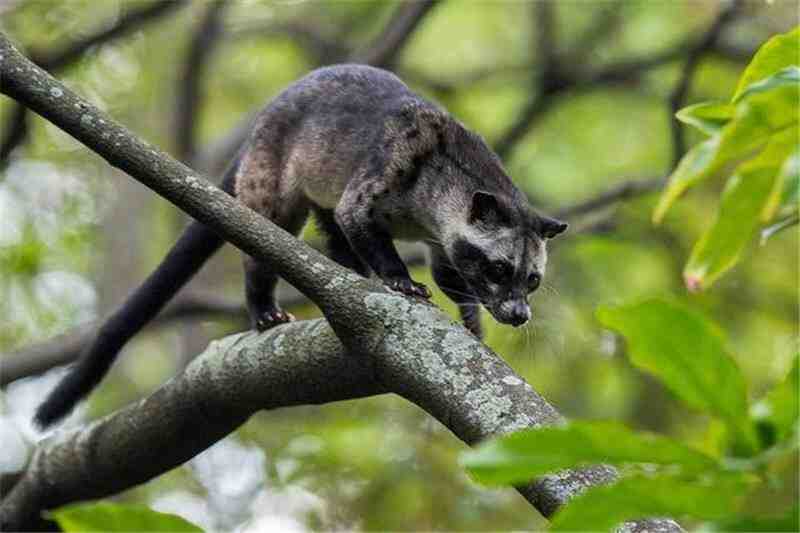Paradoxurus hermaphroditus
IUCN
LCBasic Information
Scientific classification
- name:Paradoxurus hermaphroditus
- Scientific Name:Coconut civet, civet cat, glutinous rice civet
- Outline:Carnivora
- Family:Carnivora Viverridae Paradoxurus
Vital signs
- length:48-55cm
- Weight:2-3kg
- lifetime:20year
Feature
Often caught to make cat poop coffee
Distribution and Habitat
In China, it is mainly distributed in Hainan, southern Yunnan (Xishuangbanna), the southern edge of Guangxi (Napo, Daxin, and the southern border of Shangsi) and Sichuan. Outside China, it is mainly distributed in Indochina, South Asia and Southeast Asia. It mainly lives in tropical rainforests, monsoon forests and subtropical evergreen broad-leaved forests, with very few open farmland and sparse shrub areas. The habitats are mostly in rock crevices, tree holes or tall and dense treetops.
Appearance
The skull profile is quite similar to that of the small civet, but it is wider and the snout is longer. The infraorbital foramen is located above the fourth premolar, the supraorbital process is sharp, and the skull part behind it is particularly narrow. The sagittal crest is not well developed, and the auditory bulla is laterally flattened. The top of the skull of the juvenile is smooth, and the temporal crest is not obvious; the temporal crest and supraorbital process of the old individuals are particularly developed. The snout is short and the tail is long, which is about equal to or greater than the body length. The claws are retractable and have anal glands, but they are not as developed as those of the small civet.
When walking, the palm (pacing) pad and the connected carpal pad (ankle pad) mainly touch the ground. The palm pad and the pacing pad are divided into 4 lobes, arranged in a fan shape, separated by a shallow groove in the middle. The carpal pad is as wide as the pal
Details
The body of the palm civet is slightly similar to that of the small civet, but it is more slender. There are 31 subspecies and it is a typical tropical forest-dwelling animal.

The palm civet is nocturnal and occasionally active during the day. They live in a semi-arboreal environment, are good at climbing, and often forage in pairs. The living environment of the coconut cat is basically the same as that of the civet cat. They live in rock crevices, tree holes, or tall and dense treetops. They even occupy the nests of other animals (such as giant squirrels) as their nests. They are very good at climbing, jumping freely between branches, and are as agile as flying.
The coconut cat has a way to defend itself by releasing stink bombs. Whenever they are chased by the enemy, they release a special smelly secretion from their anus and gills - stink bombs. This stink bomb is fumigated into the vomit, making people dare not approach it or chase it. Once frightened, the hair on the body immediately stands up, making a chirping roar, and suddenly attacks its enemy.
The number of coconut civets has declined due to factors such as hunting as food, habitat destruction, and hunting for trade.
Convention on International Trade in Endangered Species of Fauna and Flora (CITES): Appendix III.
IUCN Red List: Least Concern.
Listed in the second level of the "List of National Key Protected Wildlife in China".
Protect wildlife and eliminate game.
Maintaining ecological balance is everyone's responsibility!








